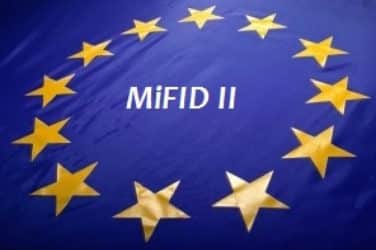Fighting the Paper Tiger: The Challenge with MiFID II Repapering
By Darren Thomas, Managing Director and Head of Counterparty Manager, IHS Markit

Darren Thomas, IHS Markit
All the terms of business, policies and procedures that banks and broker dealers have with clients will need to be reassessed and likely repapered under the terms of MiFID II.
As the regulation reaches new asset classes, requiring unprecedented handling and protection of data and carrying quantitative assessments of dealer classification, the complexity of these agreements is changing by an order of magnitude.
The agreements that carry these new structures must be distributed out to clients, either signed electronically or manually, or clients can potentially consent that they have received it. In the least complex scenario, negative consent can apply, where the client doesn’t respond and by simply receiving the document and information, meets the requirement.
Adding to the burden, MiFID II requires Direct Electronic Access (DEA) clients to undergo an annual due diligence review, similar to a Know-Your-Customer (KYC) refresh process, in addition to securing regulatory compliance written agreements in place between the firm and the client.
The Costs of Repapering
These are contentious issues. Last year in the US, authorities fined banks and brokers US$192,200,000 for order routing violations according to the SEC. Under MiFID I, in place since 2007, best execution obligations have been less prescriptive than in the US. However, MiFID II will create greater transparency and tighter obligations around handling orders and execution, with a very granular record of decision making around the order.
During the repapering process around variation margin, firms are estimated to have spent anywhere from tens of millions, to more than 50 million dollars on legal and outsourcing services. With more regulation, the sheer volume of data that must be managed increases along with the costs and time involved. The documents being exchanged are large, over 30 pages in length and daunting. In its research paper ‘Navigating MiFID II: Strategic decisions for investment managers’ consultancy Deloitte found that, “The volume of repapering that would be required under MiFID II was a concern for many interviewees, in terms of negotiating agreements and the logistics of making changes.” Banks are seeking new and more efficient ways to comply with MiFID II, with an error rate below that of email and manual record keeping.
What If Counterparties Disagree?
Depending on the trading that the client is doing or the jurisdiction they are in, clients may need to consent to order handling policies and potentially internal routing structures before their orders hit a trading venue. The status of a dealer as a systematic internaliser (SI) or multilateral trading facility (MTF) can vary according to the wider trading landscape.
Distributing the documents bilaterally is straightforward if there are no disagreements; however, client outreach can be challenging because clients tend to be non-responsive in some cases. In this case, a legal document must get to the proper department at an asset manager handling requests from 20 to 30 different brokers over the next four to five months, none of whom have identical terms of business. In some cases, buy-side firms will be classed as UCITS or AIFM firms and not investment firms under MiFID II, impacting their compliance obligations and potentially their relationship requirements.
Where there are disagreements – and changes to execution policy create that possibility – managing the two-way exchange becomes a more complex task. If buy-side firms respond with rival documents which reject or accept only a limited number of points, dealers will have to manage the versioning and workflow very efficiently across all clients.
Setting the bank up for future outreaches in this process is a good strategy. That will enable new outreach programmes to be more successful because the bank is aggregating data, it has the right contacts, and an efficient and effective model.
Can Technology Set Us On a Different Path Forward?
Getting greater transparency into workflow, with escalation procedures and automation employed where possible, can make compliance with MiFID II less daunting for those institutions affected.
Non-compliance has the potential to be crippling. Data, such as LEIs, are fundamental to allow trading. Absence of policies around accepting how the orders are handled, or how your processes are managed, will see firms restricted from trading as well. A bank’s operational team must have confidence in these processes. That means watertight proof of outreach. That means a verifiable record of actual and attempted contact. The bank’s sales-trading team must be confident that it has valid and detailed client consent. In all of these activities, automation reduces the risks associated with manual processing.
Moreover, this is a highly competitive market. Proactive firms that obtain documentation and consent from clients can build a stronger relationship and engender trust in their client base. If consent is not given, a dealer will have to classify clients as retail investors, heaping more operational burden on their firm. Therefore, employing an automated solution is not only an efficiency gain, but an opportunity to increase competitiveness.
At present, the target is 1st November for the leading firms, so they are prepared and ready in advance of 3rd January, 2018. Documents should be sent by August – September of this year at the latest – to minimise the risk of timing problems. Engagement with workflow and outreach systems should begin today. Client interactions need to be consistent, verifiable and auditable to make sure relationships are enhanced and not strained as the result of administrative weakness.




